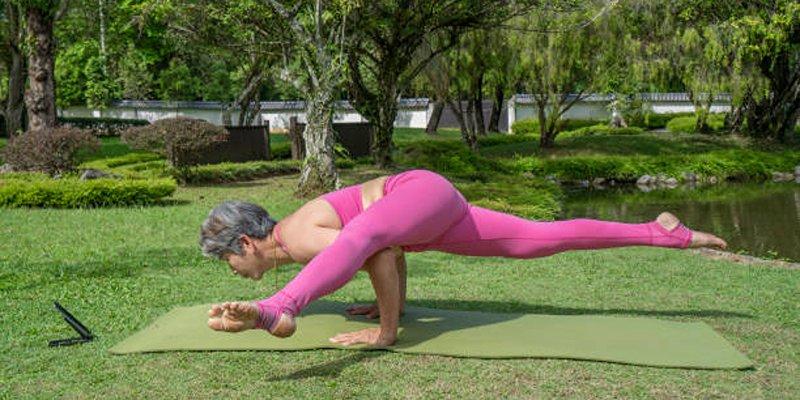Maintaining a healthy lifestyle doesn't have to be repetitive or dull. By exploring innovative and creative approaches, you can make your health routine more engaging and sustainable. Whether it's experimenting with activities that challenge your body in new ways or incorporating mindfulness practices, there are countless ways to elevate your well-being.
1. Integrate Functional Fitness into Your Workouts

The approach to traditional exercises separates individual muscle groups from each other while functional fitness trains your body to execute natural physical activities. The strength and coordination alongside balance development of your body results from kettlebell swings together with battle ropes, sled pushes, and weighted carries exercises.
Why does it work?
The movements of functional training reproduce real-life activities which include squatting and pulling along with lifting. Through functional training you gain injury prevention benefits alongside superior daily performance while activating your core muscles more than isolated movements do.
How to start?
Swap one session per week with a functional training circuit. People should use dynamic exercises that include box jumps or single-leg deadlifts or resistance band pulls for achieving full body movement challenges.
2. Cycle Through Workout Modalities
Doing the same type of exercise week after week can lead to burnout or stagnation. Rotating through various modalities keeps things fresh and ensures all aspects of fitness are addressed.
Options to explore:
- Strength training for muscle development
- Yoga or Pilates for flexibility and balance
- High-intensity interval training (HIIT) for cardiovascular endurance
- Outdoor hiking or swimming for mental and physical refreshment
Tip:
Schedule your week using a theme—Strength on Mondays, Mobility on Wednesdays, and Endurance on Fridays. A varied routine prevents overuse injuries and keeps your mind engaged.
3. Prioritize Micro-Recovery Moments
Most people understand the value of rest days, but fewer recognize the impact of daily micro-recovery. Short bouts of intentional rest or gentle movement between intense sessions can accelerate overall recovery.
Simple strategies:
- 10 minutes of guided breathing after workouts
- A 5-minute walk after each meal
- Stretching or foam rolling during TV time
- Using a standing desk and alternating postures throughout the workday
These small practices reduce muscle stiffness, support circulation, and enhance mental clarity.
4. Embrace Cold Exposure and Contrast Therapy
Exposure to cold (through cold showers or cold water immersion) followed by warmth (like a sauna or warm bath) is known to improve circulation, reduce inflammation, and boost recovery.
How to use it safely:
- Start with a 30-second cold shower at the end of your normal shower
- Gradually increase exposure as tolerance builds
- Pair with stretching or light movement after for amplified effects
Note: Consult your physician before starting contrast therapy, especially if you have circulatory or cardiovascular conditions.
5. Add Play to Your Routine
Health isn’t just about discipline—it’s also about joy. Injecting a playful element into your routine can reduce stress, enhance creativity, and build emotional resilience.
Ideas to explore:
- Dance classes, even at home
- Rebounding on a mini trampoline
- Group sports with friends or local clubs
- Martial arts or self-defense training
Play-based movement improves brain function and fosters a sustainable love for being active.
6. Track More Than Just Calories
Instead of obsessing over calories or weight, consider tracking metrics that paint a fuller picture of your health.
Useful alternatives:
- Sleep quality (duration, restfulness, and consistency)
- Heart rate variability for recovery insights
- Water intake
- Daily energy levels or mood patterns
Use journals or health apps to monitor trends. This encourages smarter decisions based on holistic well-being—not just appearance.
7. Use Mindful Movement for Mental Health
Mindful movement combines physical activity with conscious attention. This can help you tune into your body, reduce anxiety, and boost self-awareness.
Examples include:
- Tai Chi or slow-flow yoga
- Walking meditations in nature
- Breath-synchronized stretching
Unlike high-intensity workouts, mindful movement is restorative and ideal for managing stress and emotional fatigue.
8. Upgrade Your Nutrition Without Going Extreme
Rather than following restrictive trends, focus on enriching your meals with quality ingredients and strategic combinations.
Smart upgrades to try:
- Swap nutrient-poor snacks with protein-rich alternatives like Greek yogurt or boiled eggs
- Add colorful vegetables to every meal for added fiber and antioxidants
- Use herbs and spices like turmeric, ginger, or cinnamon for their anti-inflammatory properties
- Eat fermented foods (like plain kefir or unsweetened yogurt) to support gut health
Hydration also deserves attention—consider infusing your water with lemon, cucumber, or mint for added refreshment and nutrients.
9. Learn a New Health Skill Every Month
Education is a powerful tool. Challenge yourself to learn something new each month that contributes to your health journey.
Skill ideas:
- Mastering a new stretch or yoga pose
- Learning how to meal prep efficiently
- Studying basic anatomy to understand muscles and joints
- Exploring techniques for improving posture or ergonomics at work
Consistent learning fuels motivation and helps prevent health routines from becoming repetitive or uninspired.
10. Practice Digital Detox Hours
Screens are unavoidable, but overexposure can negatively affect sleep, focus, and mood. Establishing screen-free time supports mental clarity and encourages healthier habits.
Strategies to implement:
- No screens an hour before bedtime
- A tech-free morning routine
- Reading physical books instead of scrolling in downtime
- Using grayscale mode to reduce visual temptation
These boundaries help recalibrate your brain and improve your overall sense of balance and well-being.
11. Connect with a Wellness Community
Accountability and encouragement are powerful motivators. Whether it’s a local class, online group, or wellness challenge, engaging with others makes the journey more enjoyable.
Benefits include:
- Shared knowledge and experiences
- Mutual motivation and goal-setting
- Exposure to new techniques or trends
- Reduced feelings of isolation
Consider joining a virtual fitness challenge, subscribing to a health-focused newsletter, or participating in a neighborhood wellness event.
12. Reevaluate Your Sleep Environment

Sleep quality affects every aspect of health—cognitive performance, emotional stability, immune function, and recovery. Beyond getting 7–8 hours of rest, examine your sleep setup.
Checklist to optimize sleep:
- Invest in blackout curtains or a sleep mask
- Maintain a cool, quiet room
- Avoid stimulants (like heavy meals or bright lights) close to bedtime
- Use calming scents like lavender or chamomile
Small changes to your sleep environment can lead to big improvements in energy and focus.
Conclusion:
Leveling up your health routine doesn’t require drastic changes—it’s about making smarter, more personalized choices that align with your current lifestyle. From cold therapy and functional movement to digital detoxes and mindfulness, these creative strategies offer a path to better physical and mental well-being. Consistency remains key, but adding variety, intention, and joy will keep your health journey not only effective but also sustainable and fulfilling.












